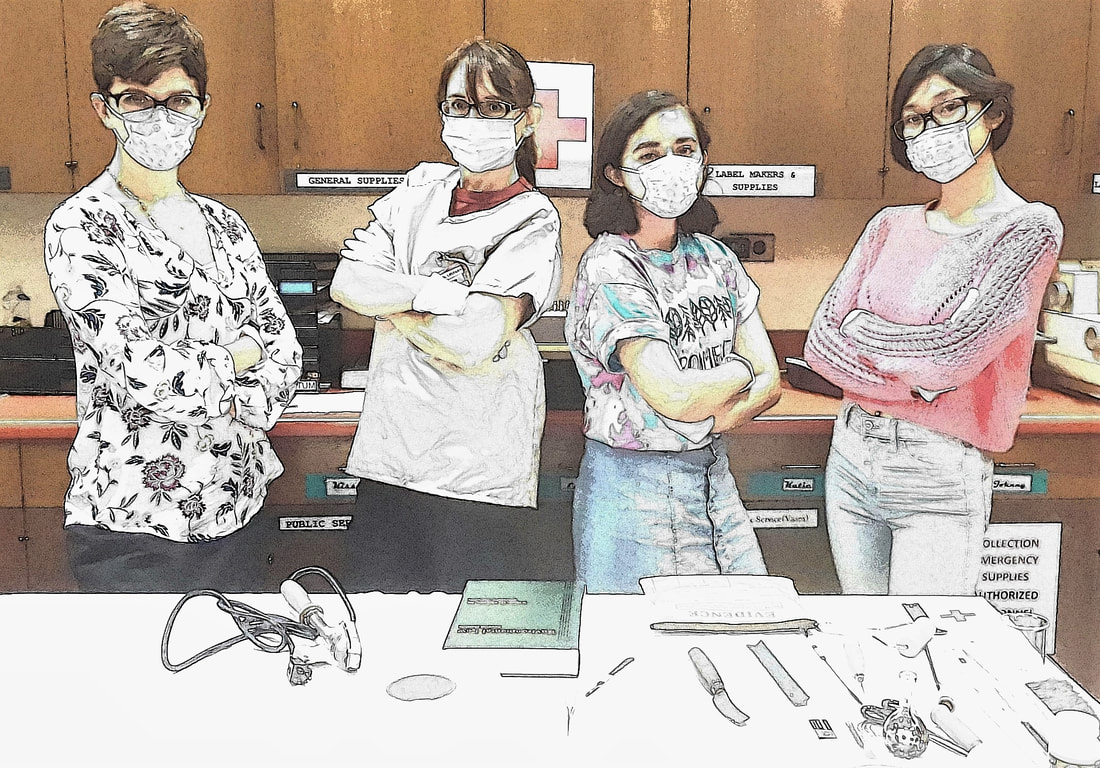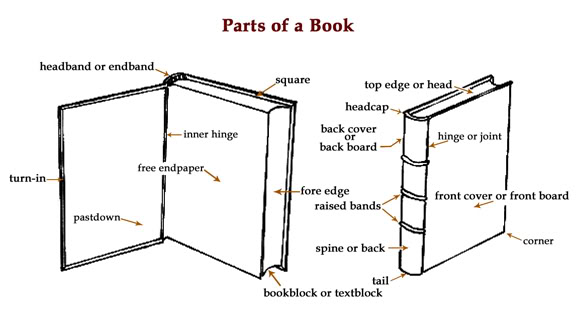0 Comments
 The cover of the Codex Gigas, or Devil’s Bible. The cover of the Codex Gigas, or Devil’s Bible. In a year where Halloween will have masks of a different kind, and fear is all too present, I decided some spooky stories about books from the distant past might distract us for a spell. On a dark and chilly December evening in Edinburgh, Scotland, I visited the Surgeons’ Hall Museums and found it deserted. I looked into a glass case that held a pocketbook which stated that it was “bound with William Burke’s skin.” William Burke and William Hare were entrepreneurial resurrection men turned serial killers in Victorian Edinburgh. After his execution, Burke’s skin was apparently used to bind this gruesome souvenir. This strange visit to the museum is what led me to do more research on the infamous practice of anthopodermic bibliopegy (books bound in human skin). According to some scholars, the earliest known anthropodermic book was a French Bible from the 13th century, but most proven examples are from the late 16th through the 18th century. But WHY would anyone do such a macabre thing? There were several reasons: 1. For punishment. Many skin books are bound in the skin of executed criminals. Sometimes their confessions would be bound with their skin. Father Henry Garnet heard the confessions of many involved in the Gunpowder Plot (a plan to blow up the houses of Parliament in 1605) with Guy Fawkes. Because he didn’t report the confessions, he was hanged, drawn, quartered and had his skin removed to bind the book A True and Perfect Relation. The impression of Garnet’s face is on the front cover. They say you shouldn’t judge a book by its cover, but many of these book covers have been judged! 2. Collectors wanted something unusual to impress friends – in the 18th & 19th century these items would be considered curios for their collection. 3. People bound books in human skin to memorialize the dead. Some folks gave consent to have their skin used for this purpose. Medical consent, as we know it today, is a relatively modern concept. One criminal was so impressed with a man he robbed, but who fought him bravely, that he wanted to show penance. He asked that the memoir he wrote in prison be bound with his skin after his death and presented to “the only man who ever stood up to him.” The Highwayman Narrative is available for viewing at the Boston Athenaeum. The cover reads “Hic Liber Waltonis Cute Compactus Est:” “This book was bound in Walton’s skin.” 4. Medical books were also bound in cadaver skin as a way of doctors thanking their patients for helping them learn. There are many book inscriptions claiming to be bound in human skin, but they often turn out to be false. The Anthropodermic Book Project (ABP) is a project that hopes to create a census of all the works of anthropodermic bibliopegy. Esteemed scientists from the fields of forensic anthropology, medical librarianship, and chemistry are working to verify whether books claiming to be bound in human skin actually are. So far their tally runs as follows: o 49 books have been rumored to be bound in human skin; o 32 of these have been tested; o 18 books have been confirmed to be bound in human skin; and o 14 have been proved to be covered in leather from pigs, cows or sheep. In some cases it may be that they were formerly bound in human skin and a new owner decided to have it rebound. There are many libraries that have possible works of anthropodermic bibliopegy, in addition to those mentioned above. What are the ethics around keeping these books in a library or museum? Are these books considered human remains, and if so, how should the remains be dealt with? Do modern medical guidelines apply? While the Society of American Archivists and other professional associations have no approved policies for dealing with human remains of this type, the library field is committed to working on best practices for handling sensitive materials like anthropodermic books/bindings. No one has all the answers yet, it will likely be an evolving issue for many years to come. OTHER MYSTERIOUS BOOKS TO GIVE YOU A FRIGHT! The Codex Gigas (Latin for Giant book), also called The Devil’s Bible, is said to be a cursed tome created in the 13th century in a Benedictine monastery in Bohemia. This massive book is 310 pages long (10 pages are missing), measures 36”x20”x9,” weighs 165 pounds, and it is estimated to have taken 160 donkey or calf skins to make. It is bound in leather with metal bosses and is the largest Medieval illuminated manuscript in the world! It is believed to have been written by a single scribe and would have taken at least 20 years to complete, if not longer. Legend has it that a monk, named Herman the Recluse, broke his vows and was sentenced to be bricked into the walls of the monastery and left to starve, but just before the last brick was added, he asked for mercy. He promised to compile a book of all the world's knowledge in one night. Herman knew he couldn’t do it alone, so he offered his soul to the devil in exchange for his help. In gratitude for helping him complete the work and save his life, Herman created a full page portrait of the devil. The illustration of the devil faces a page depicting the kingdom of heaven. The book is often displayed open to these pages, so people can view the contrast between good and evil. Legends of a curse have followed the codex throughout its history. In 1477, the monastery that owned the codex was so impoverished they had to sell it, and soon after that the monastery burned down. Then, in 1593, the new owners of the book lent it to the Holy Roman Emperor Rudolph II, and he never returned it. Librarians can relate. Soon after that he was removed from the throne, and rightfully so. During the Thirty Years War the Swedish Army seized the codex and brought it to the Royal Library in Stockholm. In 1697, a fire engulfed the library, but the codex was saved after it was thrown out a window, injuring a person who was walking below. This amazing manuscript also survived the inquisition, despite its depiction of Satan. You can still visit this extraordinary work in Sweden today, if you dare. The Voynich Manuscript is unusual because no one has been able to read it yet! Carbon dated to between 1404- 1430, this 200 page, error-free tome is one of the most mysterious manuscripts in the world, baffling scholars for generations. Many codebreakers and language experts have studied the writing using mathematical databases to determine if it could be an actual language and have concluded that it is in a nonsense script, written convincingly as if it was a human language. Some scientists theorized it was written by Leonardo Da Vinci, but the dates don’t line up. Others thought that it was written in an obscure South East Asian language to hide scientifically blasphemous information from the inquisition. The illustrations imply that it is some kind of medical book, as it talks a lot about herbs, plants and star charts, all necessary to treat patients in medieval times. It is named after the Polish book dealer who purchased it in 1909 and spent his whole life trying to decipher it. Books of this nature were very valuable, so the most likely explanation is that it is a fantasy document, written by someone who wanted to make money, perhaps by claiming the book had magical healing powers. I will be visiting this fascinating manuscript next summer when I attend Rare Book School at Yale’s Beinecke Library. I will let you know what it says. There are so many mysterious books you can get lost in while in isolation. Check out the Ripley scroll, the Rohonc codex, the Popol Vuh, the Great Omar, the Book of Soyga, Codex Seraphinianus, the Beale Ciphers, The Liber Linteus Zagrabiensis, Shadows from the Walls of Death (do not touch this particular poisonous book!). There are 130 million books on the planet, but I totally understand if some of you now want to stick with your e-readers! This article was first published in the Hawaii Library Association's Fall 2020 Newsletter, Kolekole
|
AuthorLibrarian, archivist, genealogist, artist, writer,zombie. Archives
June 2023
Categories |











 RSS Feed
RSS Feed
